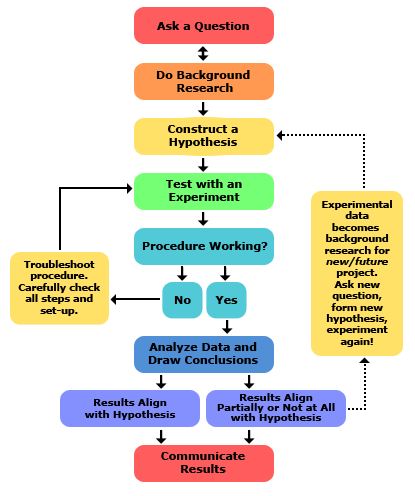The Mechanics of Understanding | Chapter #4 - The New Approach to Reality
As seen in chapter #3 without the proper tools logic alone cannot provide a good description of reality, the man explanation is not sufficient. The first in history to realise that we cannot accurately describe nature by just thinking really hard was Aristotle, he thought one must test how nature behaves before conceiving a model of it.
For this reason many believe Aristotle is the father of the scientific method, but consider this:
Aristotle thought that given two objects, the first one heavier than the second one, the first one should fall faster because it is in its nature to do so.
The Experiment
Think for a second and imagine to let a bowling ball and a feather fall from the same height, which will hit the ground first?
According to Aristotle the bowling ball, but Galileo Galilei found out something different.
He of course did not test his theory with a bowling ball (bowling was not a trend in Italy at that time), but the legend says he dropped at the same two different objects from the tower of Pisa time discovering that falling objects accelerate toward the ground at the same speed.
Later Sir Isaac Newton will explain why.
Hasan Ibn al-Haytham, Johannes Kepler, Marie Curie, Albert Einstein, Edwin Hubble, Nicolaus Faraday, Neils Bohr, James Clerk Maxwell, Werner Heisenberg, Erwin Schrodinger, Nikola Tesla, Pierre Simon de Laplace… These are few of the enormous number of scientists who contributed to our society.
Many of them made huge discoveries in their fields by accident, many with years of dedicated work instead, but all of them gave to humanity the greatest contribution: the continuous improvement of the scientific method.
The Power of collective Knowledge
(when used right)
The modern scientific method has some rigid standards and it is divided in these steps:
This is a simplified diagram, if you need a more accurate description of the scientific method you can follow this fantastic link.
This method allowed us to create standards in every discipline so that we could finally build a framework to use for each one. Whether the scientist is a physicist, a biologist, a chemist or works in another field, everyone follow the same rules. Moreover the result of the work of every scientist must be analyzed through a process called “peer review” which allows the result to be tested by other scientists around the globe.
As a result, the network of scientific models and frameworks forms a relatively unified picture of nature.
So the scientific method, since it is based on testing and experimenting events in the real world, should allow us to have an accurate description of reality and make predictions.
But this method alone can still fail….because humans make mistakes.
In the next chapter we’ll see how this happens, how we can prevent errors and we’ll close the series focusing our attention on how understanding nature influence our everyday life.
Super-Duper Important Footnote
I’m really happy recently making these posts because it pushes me to research on topics I always wanted to study in deep, but never had the time to. Also, thanks for your amazing feedback and thanks to everyone who followed me, I hope you are enjoying these posts.
Of course feel free to comment below this post, I really enjoy talking with you :-)If you want to read more or if you like this series, consider to Upvote and Follow, it helps me out a lot and it is a great additional incentive to continue!
Thank you and I’ll see you in the next article!
:quality(75)/curiosity-data.s3.amazonaws.com/images/content/thumbnail/standard/1ab8c40d-f4f3-463a-8e13-ecf604a3aeb1.png)

@randowhale is replying you but @randowhale1 is upvoting u see the number 1 from your voter list . its very different between whale and whale 1 .
I didn't notice that, do you know why?
They explained it somewhere. If I remember right, it is just a second bot to spread better the voting power. You have just to remember, that you always send the request to randowhale and not to randowhale1.
Besides: Again a nice article you wrote there! :-) I'm quite happy to see, that "reproducing" is not part of the flow chart above. That's great because all scientists know, that reproducing some good results will never be successful (irony off) ;-)
Speaking about "reproducing " I just published a post on a related subject here. As always I feel your comment is very kind, maybe too kind :-) I take this opportunity to compliment you on your new post, your "Science for Everybody" series is amazing as always! This time I learned something new und Mein Deutsch wird schon langsam besser ;-)
Freut mich zu hören! Dann schreibe ich dir bald nur noch auf deutsch ;-)
Random question I like to ponder on the subject of the bowling ball and the feather: if the bowling ball was an object the size of the moon (where its mass is extremely large) and the feather was still a feather, would they still move at the same speed or would there come a point where they no longer do so? In other words, if two objects are released relative to a first object, does the entire range of "infinite" masses all have the same rate of acceleration? Or are the feather and the bowling ball--relative to the Earth--so close to one another in mass, again relative to the Earth's mass, that they appear to function the same?
Also, we live in a unique time in history where we have so many scientific experiments with observations that we do not necessarily need to test hypotheses with new experiments but rather we can essentially go through old experiments with a new interpretation to see if the interpretations align with the already-made observations. That said, such a task inevitably leads to new experiments envisioned to test specific things that have not been tested due to a lack of consideration of certain things as "important" to the experiment.